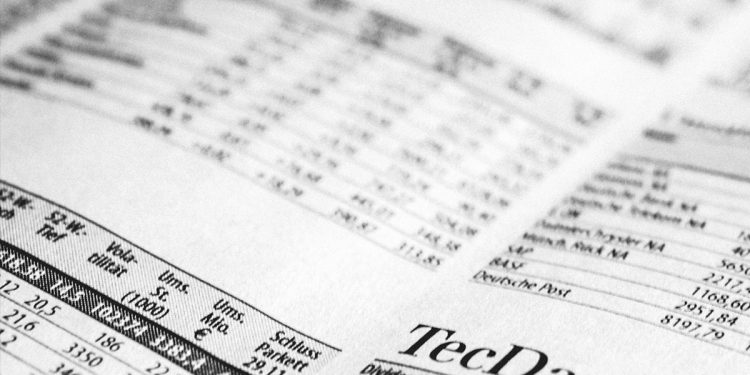What are Bull and Bear Markets?
When investing, one of the most important terms you will come across is “market.” The types of market that we are talking about are Bull and Bear markets. These two markets have very different effects on the stock prices and economies as a whole. It’s important to know which market you’re in if you want to be a successful investor.
When you hear someone talk about the stock market, nine times out of ten they are talking about a Bull or a Bear market.
Bull Market Defined
A Bull Market is defined as a prolonged period of rising prices for stocks and other securities. A bull market can be best described by the old saying, “the trend is your friend.” To determine whether or not a market is a bear or bull, there are certain things you have to follow. A market trend of rising prices set by the Federal Reserve can be a sign of a Bull Market. If the price of an asset rises rapidly without being affected by outside influences, that means it’s in a Bull Market.
In this kind of market, companies are making lots of money and investors are purchasing shares as fast as possible. If you’re an investor who is looking to make the most out of your investment, a Bull Market is where you want to be.
This kind of market usually lasts for at least a year or more. Sometimes markets will have what’s called “bull traps.” A bull trap occurs when after setting new highs, prices fall back down again due to people buying into the hype. One example that occurred in recent history was during 2013 when Bitcoin reached over $1,000 a coin but dropped all the way down to $300 within only three months. Bull Traps can cause some people to lose money by believing the trend is continuing when it actually’t. However, this doesn’t happen very often.
Bull markets can cause recessions, but it’s important to note that they are usually followed by them. This is because, once everyone knows the Bull Market has ended, sales will drop and companies may start going under if they haven’t made any profit yet. As a result, more people lose money and the recession gets worse.
The end of a bull market typically comes after the price has been pushed too high and there isn’t enough buyers left for it to continue growing. Investors begin taking their money to safe havens such as gold or government bonds which causes stock prices to decline rapidly until losses are stopped by more buyers entering the market. If you’re an investor who wants to stay on top of your game with this information, it’s important to know how the Federal Reserve can affect the direction of a market.
Bear Market Defined
A Bear Market is defined as a general decline in stock prices over a sustained period of time. In this kind of market, investors and buyers become more cautious with their money because they are not certain about what will come next and if they will lose money or gain profit. A bear market can be easier identified than a bull market because things get very dramatic once one has started. In order to tell if you’re in this kind of market, there are two things that must happen: the first is that stocks drop by 20 percent from the prior high point and second is that they stay below their previous low point for at least two months after the drop.
When a market enters a bear state, things can get very ugly pretty quickly. People who have money and are willing to invest it in the stock market become very sparse which is not good for business at all. Bear markets tend to happen after a Bull Market due to people being overconfident with their investments and spending too much time trying to find out ways that they can make more money when they should actually be taking care of protecting themselves from loss.
Most media outlets refer to this as “market correction” which means that there has been an unexpectedly large drop in prices but everything eventually goes back up again within six months or less.
A bull trap is another sign of a Bear Market, but instead it happens when prices are very high and then all of a sudden they drop, but rebound to their previous high point. A lot of short sellers try to take advantage of this by betting that prices will fall below what they were before only to be left with a loss when the price unexpectedly rises instead.
Conclusion
When it comes down to it, you don’t need a degree in economics or finance to understand how Bull & Bear Markets work. If an asset’s value rises quickly over time without any regulation from outside forces such as politics, enough people will get involved which will cause the market to grow even faster.
Once investors are certain that losing money is unlikely and the value continues climbing upwards, some people may start taking their money out of the stock market and put it somewhere safe such as a savings account.
When this happens, the market enters a bear state and everything starts going down in value quickly. If you are an investor who wants to save your money from being completely lost during these kinds of crashes, it’s important that you do not make any big purchases or changes until everything is back up and running because sometimes it can take months before the market recovers.
Finally, if something does go wrong while the value is high or drops too far without recovering within two months, there may be another panic happening that will cause everyone to lose their investments which is why it’s extremely important for investors to stay calm during any sort of Bull & Bear Market.
Summary
A Bull Market is when the stock market experiences an increase in prices with little or no regulation from outside forces. A Bear Market is when stocks drop and stay below their previous all-time low for two months. If there are large losses of value, it’s possible that a Bull Trap has occurred which can be identified by unexpected drops before going right back to where it was. During a Bull Market, prices go up quickly while during a Bear Market they go down quickly but recover in less than six months on average.
Understanding how this works isn’t too difficult once you know these 3 facts: A Bull Market is an increase in stock prices with little outside intervention; a Bear Market is when prices drop and stay under the lowest point for 2 months; during a Bull & Bear Market prices will go up and down but eventually recover within less than six months.






